“Wait, What?!” Teaching Jewish Law in a Reform Jewish School

Zach Mann received his doctorate in Modern Jewish Studies from the Jewish Theological Seminary in 2013. Since then, he has taught middle school and served as a Jewish Studies and Hebrew administrator at Rodeph Sholom School (NYC). He spends his summers at Ramah Day Camp in Nyack and supports Tottenham Hotspur Football Club.
As a teacher at Rodeph Sholom School (RSS), I have for some time considered what it means to teach Torah SheBe’al Peh in a Reform Jewish independent school. What I offer here is a taste of how my colleagues and I have strived to shape our 7th grade Rabbinics unit so that it is aligned with our school’s mission and meets the needs of our specific community of learners. And while every school is unique, I am hopeful that the insights I’ve gained from teaching one unit on the development of Jewish law are instructive for any Jewish day school grappling with teaching Torah SheBe’al Peh.
Our school’s mission is: “To develop each student’s love of learning and sense of responsibility to themselves and their community through meaningful experiences and intellectual exploration,” and its vision is one of “Inspiring today’s curious learners to become tomorrow’s purpose-driven leaders.” The Jewish studies curriculum is subsumed under the broader educational thrust of the school, including fostering critical thinking skills: “Our Jewish Studies classes ask students to take part in a long tradition of intentional reading, questioning, analysis, and discussion of Jewish texts and ideas. We challenge students to grapple with big questions, benefiting reading comprehension and interpretations of all kinds of texts and literature.” Thus, while the Jewish studies classes strive to cultivate a sense of Jewish connection and meaning in our students, the approach to our content is interdisciplinary, focusing on promoting inquiry, analysis, and close-reading among other core academic skills found in other disciplines.
Our Jewish studies curriculum focuses primarily on Tanakh and the rituals and customs of the holidays. There is little time for a formal study of Torah SheBe’al Peh, although when learning about the origins of Jewish practices you can’t get very far without making recourse to the rabbis. As our students hopefully come to appreciate, so much of the edifice of Judaism is built on the rabbinic corpus. Clearly, my colleagues and I reasoned, it is worthwhile to expose students to the development of Jewish law as well.
Why Study Talmud....
There are many reasons why day school students should learn Torah Sheba’al Peh, but I’ll focus on four reasons presented in two pairs…
Since so much of rabbinic literature takes for granted a strong command of Torah SheBikhtav and the rhythms of Jewish life and ritual, my colleagues and I wanted to be thoughtful about the content we chose for a unit on the development of Jewish law—especially since we work with the assumption that, for at least some of our students, their school experience is their primary and perhaps only point of contact with Jewish practice. We cannot presume that they are motivated to live a Jewish life in order to fulfill the details of halakhah, so we need to address on a fundamental level the need to even study this material. Indeed, the very notion that this is law for them is questionable.
We decided to start with shema, an amalgamation of Biblical texts and a prayer with which they were likely to be familiar, using that as a text for deeper learning. We begin by asking students to employ the close reading skills they have been developing and honing since some of their earliest years at our school. This is particularly true in 6th grade Jewish studies and in their middle school Humanities classes, so we intentionally seize on this opportunity to point to how their skill development proceeds from year to year and across curricula. Focusing their attention on the second paragraph of shema raises many intuitive yet incisive questions. How does one love God in the precise manner commanded? What are “these words” we are meant to place on our hearts and what does it mean to place them as a sign in the prescribed locations? The concrete, literal, and visual nature of the mitzvot of mezuzah and tefillin provide a less esoteric point of entry for students seeking to understand how the rabbis forged ritual mitzvot from words of Torah by means of interpretation.
Inevitably, students seek greater clarity and precision around the questions of when we are meant to recite these words. “So are we meant to recite the Shema every time we get up to get a snack from the fridge and then again when we lie back down to watch TV?” Again, through the power of their own intuition and incision, students will arrive at a fairly reasonable conclusion: “Maybe it just means when you go to bed and when you wake up.”
As we now approach that famous first mishna in Berakhot, our students appreciate just how necessary, vital, and responsive Torah Shebe’al Peh is and just how inscrutable the Written Torah can be without it. This first mishna also gives our students a taste of rabbinic style and the deep interpretive work it will also require of us. When the mishna opens with: “From what time on may we recite shema in the evening?” it has already asked and answered an unseen question. Although we don’t ask our students the opening question posed by the Talmud, “from where do we know this,” per se, by asking the English approximation, we invite students to do the interpretative detective work of linking the recitation of shema in the evening as a given fact back to the very precise words in the Torah from whence they came. Very quickly the students begin to appreciate that they have inquisitively stepped into the shoes of the rabbis, drawing them in to the process.
This mishna also offers us a window into a rich rabbinic world very different from theirs, yet grounded in sense and reason. “Wait, what do you mean an hour isn’t always 60 minutes? Or even a fixed amount of time from day to day?!?” Allowing students to travel from a judgmental stance (“That’s crazy!”), to a more open-minded consideration of difference (“Why might an agrarian society rely on a proportional hour?”), and de-center themselves and the assumed givens of their world (the way we structure time itself is somewhat arbitrary and culturally-conditioned!) is highly beneficial to the middle school brain and soul.
Beyond that, rabbinic time presents an opportunity to engage in fun math challenges in which students are asked to convert to and from OH (Our Hours) and RH (Rabbinic Hours), solve for when the latest time for reciting shema is according to R. Eliezer or the Sages, or determine when hatzot is on a given day, allowing these same middle school students to flex both their critical thinking and math skills through another interdisciplinary point of contact, which in turn engages a wider variety of students.
After seeing how passionate and invested these students become during these challenges, I ask them to consider how this might mirror the passion, intensity, beauty, and joy of other batei midrash. I’m hopeful that a byproduct of this experience is that these same students come away with a greater appreciation for both their ancestors and contemporary co-religionists who choose to invest many hours swimming in these same waters. Indeed, the Sea of Talmud is no less their spiritual birthright.



Zach Mann received his doctorate in Modern Jewish Studies from the Jewish Theological Seminary in 2013. Since then, he has taught middle school and served as a Jewish Studies and Hebrew administrator at Rodeph Sholom School (NYC). He spends his summers at Ramah Day Camp in Nyack and supports Tottenham Hotspur Football Club.
Reach 10,000 Jewish educational professionals. Advertise in the upcoming issue of Jewish Educational Leadership.
Do you want to write for Jewish Educational Leadership? See the Call for Papers for the upcoming issue.


FROM THE EDITOR: Fall 2023
Fascinating. Infuriating. Uplifting. Complex. Boring. Inconsistent. Logical. Brilliant. Eclectic. Irrelevant. Compelling. Frustrating. Inspiring. Ancient. Contemporary. The Talmud evokes all the above, and more. I vividly remember my first encounter with Gemara. I must have been ten years old, and my family was in a bungalow colony in the Catskills. Rabbi Cohen taught Gemara to the older boys, of which I was not, but I asked permission to sit in and listen. I loved following the discussions and debates, even though I couldn’t read any of it and retained none of the content.


The Block Method for Teaching Gemara
By its very nature, teaching Gemara seems to defy everything we know about education. When we teach math, or language, or anything else, we start with the simple and easy-to-grasp aspects of the study area and gradually increase the level of challenge and difficulty. For example, we begin with addition and slowly move on to subtraction, multiplication, and division. We certainly don’t touch algebra until these are firmly in place. One couldn’t imagine a math class that requires knowledge of Pythagoras’ theorem presented to a class that has not yet mastered multiplication.


The Puzzling Talmud
A sixteen-year-old American Jewish day school student named Brandon (a self-chosen pseudonym) reports that he likes studying Talmud. What does he like about it? “I like the process,” he says. “It is kinda like a puzzle, that you have to get each word, and fill it in so it creates the whole text.” Brandon approaches his study of Talmud knowing that it’s going to be hard. Every word might take some effort to decode. Eventually, however, he can put it all together.
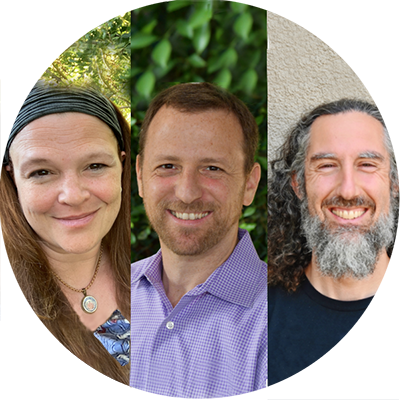

A Multidimensional Approach to Teaching Rabbinics
Pressman Academy is an early childhood through 8th grade school in Los Angeles serving a religiously diverse group of students. The school’s Judaics program, which includes Hebrew language, Jewish history, Tanakh, and daily prayer, affords a maximum of two weekly periods to teaching Rabbinics (in grades 5-8), presenting a significant challenge of what to include and how to approach it.


The Sanhedrin is in Session: Experiencing Rabbinic Literature
On Tuesday morning Rabban Gamliel called the gathered people to order. A letter had arrived from a northern district court in the Galilee which required the attention of the Sanhedrin. Rabban Gamliel took his seat at the head of the semi-circle of esteemed Rabbinic colleagues. R. Yehoshua sat on one side of him and R. Eliezer sat on the other.
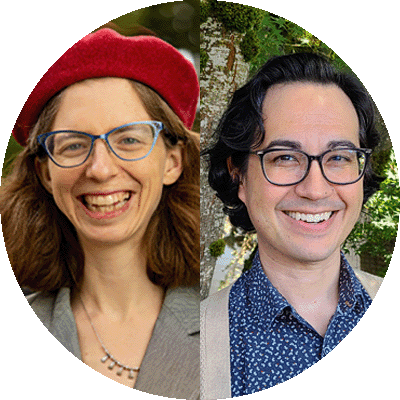

Replacing Relevance with Relationship
A relationship to Talmud study is highly valuable to those who possess it. Few other activities manage to combine elements of intellectual inquiry, spiritual questing, and moral development in the almost alchemical way that the study of Talmud does. And yet, there are a number of hurdles students must overcome in order to develop an independent relationship with the Talmud. First and foremost, studying Talmud in the original Hebrew and Aramaic can feel scary to the uninitiated. Second, the logic of the Talmud is foreign to students at first. Finally, students may wonder what a text from 1500 years ago might have to say to them.
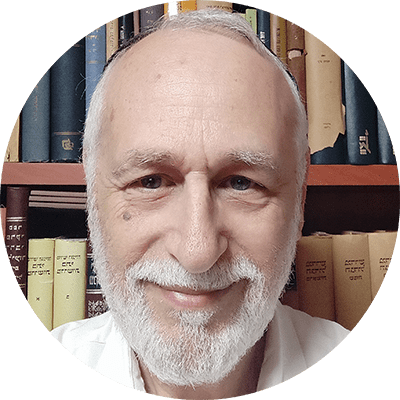

Teaching Talmud in Secondary Schools: Masorah and Modernity
Teaching of Talmud in traditional secondary schools has been a conundrum from the day it was decided to teach Talmud as part of the standard Jewish studies curriculum. Programs for yeshiva high school graduates in Israel and around the world are consistently populated by an overwhelming percentage of students who, even after six years of multiple weekly hours of Talmud instruction in secondary schools, are helpless in the independent study of Talmud. These students are successful independent learners of advanced mathematics, natural sciences, complex technology, and even humanities, but in Talmud, they require an embarrassing degree of spoon-feeding.
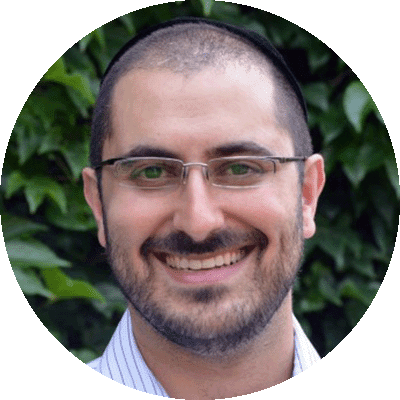

Pre-Mishnah: The Missing Link
I teach 5th grade Judaics at Fuchs Mizrachi School, a Modern Orthodox Zionist school (Cleveland). Upon entering the world of Torah SheBe’al Peh, a student is first greeted by the Mishnah—a complex and sophisticatedly interwoven compendium of Jewish law and wisdom. Students struggle to understand its relevance, how and why it was created, and its importance to the scope of their Torah learning. They ask, “Why are we learning Oral Torah?” and “Why should I care?” but underlying those questions is the more fundamental, “What is the Oral Torah?” While some choose to address this piecemeal over the span of many years, I believe that it is important to address it up front, in an organized manner.


Anatomy of a Gemara Lesson
You have been there, too, right? You thoroughly prepared a Gemara lesson by formalizing how you will explain the shakla vetarya, you concocted attention-grabbing examples and cases, charts to organize the conflicting opinions, and provided a translation and question practice worksheet. You slowly read the Gemara aloud while students annotated the text or completed linear translation sheets. You patiently and clearly explained the concepts and reasoning on a first, second, and even third pass of the reading.
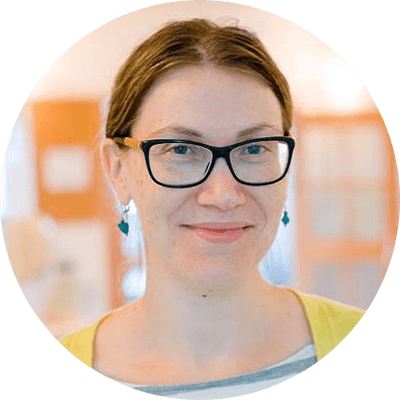

Making the Case for Agada
The rabbis of the Talmud were intentional and thoughtful educators; an example of their consummate pedagogic skill is the way they interspersed narratives into their halakhic writings and teachings. Their use of agadot is an effective teaching tool because, simply put, people love stories. We evolved to tell stories, to become compelled by stories, to connect to the characters, drama, and tension in stories. Stories draw in our students and they have the power to make them care.


Tokhehah Leshem Shamayim
One day, in a 7th grade lesson during our unit on tokhehah (the mitzvah of rebuke), a student shouted out from across the classroom: “This is tokhehah leshem shamayim!” In this moment, with one eloquent and original phrase, this 7thgrader had connected the learning in our current unit of tokhehah with the concept of leshem shamayim (for the sake of heaven) from our previous unit of mahloket (disagreement). This delighted us because it showed that the concepts of mahloket we had been teaching were not just retained for the duration of our unit, or for a test, but were concepts students internalized, held on to, and could apply to new settings and used in unique ways.
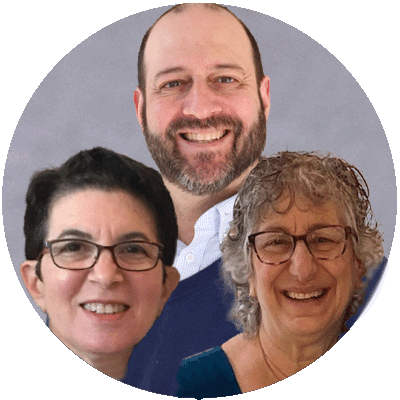

Extending the Reach of Rabbinics
Morah M.’s 5th-grade class is curating a museum exhibit showcasing artifacts that represent family legacy and tradition. The items are described on a placard that explains: These candlesticks were my Bubby’s and now my mother and I use them for Shabbat. When I chose them, I thought of the story about R. Yehuda HaNasi that we learned (Ketubot 103a). Before he died, he told his family that they should continue to set the table the same way, keeping the lamp in its usual place. We’re sort of doing the same thing when we use Bubby’s candlesticks.


Talmud Education for Diverse Learners: Taking the “Long but Short” Road
Teaching Talmud to weaker students can present many challenges not typically found in traditional Gemara classes. Navigating a text in a foreign language, especially one with the unique structure and rules of the Talmud, can be daunting for those grappling with language-based difficulties. Educators must realistically decide which teaching method—skill-based or discussion-based—will best set diverse learners up for success, and how demanding a Talmud course should be for students not likely to pursue this type of Torah learning in the future.


Teaching Talmud Guided by Essential Questions
Standing at the edge of the sea can be an awe-filled experience—the incomprehensibly vast expanse of water with no end in sight is both inspiring and intimidating. We would not consider entering it, whether to swim, sail, surf, cruise, or dive without proper preparation. Similarly, the Sea of Talmud is rich with information, personalities, debates, and much more. It, too, can inspire and intimidate with its vastness and complexity, and we should not expect our students to be able to jump in and navigate it without context and a roadmap. To prepare our students as they embark on their journey into the Oral Torah, we need to define our goals and our strategies for achieving them.


An Alternative Approach for Teaching Talmud
In my first year of teaching, I taught a student whom we will call Yossi. From the time he started 1st grade reading groups, Yossi was placed in the lowest track. This pattern persisted through my 11th grade Gemara class. A few weeks into the first semester of 11th grade, Yossi approached me after class to ask me a burning question which he was embarrassed to ask in front of his peers. He asked, “Who is Rabbi Baraita?” I said, “What do you mean?” He responded, “My past teachers kept explaining ‘the Baraita says…’ Who is Rabbi Baraita and why is he referred to as the Baraita?”


A Learner-Centered Approach to Teaching Gemara
Traditional methods of teaching Gemara, such as hevruta learning followed by an interactive shiur, have stood the test of time. When teaching beginner students, however, this approach is less common, given their lack of prior knowledge or skills. As a result, many teachers prefer a frontal approach, perhaps projecting the daf on the SMART board and presenting the text phrase-by-phrase while students take notes between the lines of the traditional Vilna text. If hevruta time is used, it is often for the students to review material rather than for them to try to decipher the text. In this article, we are going to propose a method for using a modified version of the traditional approach which can be used for learners starting out on their Gemara learning careers.
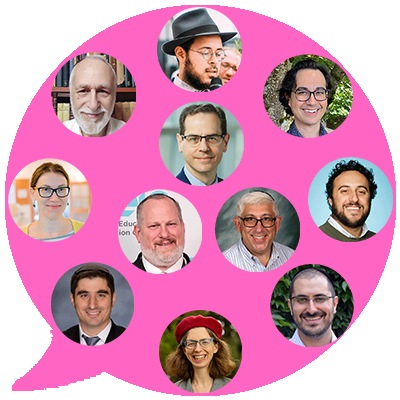

Why Learn Talmud?
Some of the articles in this issue describe the joy of studying Talmud, others break down the complex processes to make it more accessible to students or to enable the students to engage with it meaningfully. And just to make sure that we covered the bases of both the how and the why of Talmud study, we asked our authors to weigh in separately on the question: “Why do you think that day school students should be learning Gemara/Rabbinics?” We invite you to join that discussion.
Fall 2023 Journal Credits
JEWISHEDUCATIONALEADERSHIP
Jewish Educational Leadership is a publication of The Lookstein Center for Jewish Education of Bar Ilan University.
Chana German, Executive Director
JOURNAL STAFF
Hyim Brandes | Editor
Zvi Grumet | Editor-in-Chief
Chevi Rubin | Editor
Shani Sicherman | Copyeditor
Please send correspondence regarding journal content to zvi@lookstein.org.
The Lookstein Center publications present a variety of viewpoints. The views expressed or implied in this publication are not necessarily those of the Center.
EDITORIAL OFFICES AND ADVERTISING
The Lookstein Center for Jewish Education
Bar-Ilan University
Ramat Gan 5290002 Israel
Tel: +972-3-531-8199
US: +1-646-568-9737
www.lookstein.org
© 2023 by The Lookstein Center for Jewish Education.
All rights reserved.





